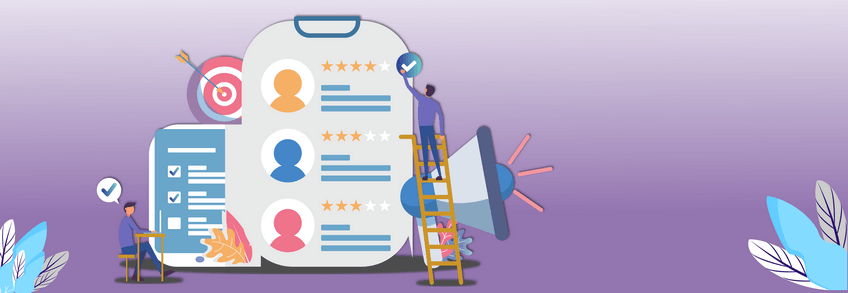Let’s start this one with talking about first dates.
It’s fairly common in this swipe-ridden world to find yourself lending an ear to a friend or colleague, talking about how their first date with someone went. The emotions are spread across a wide spectrum with “Jeez, an empty chair would have been a better company” on one end to “So yeah, we’re seeing each other again this weekend.” on the other. The common thread across all these tales is – conversation. A date is likely to move in the general ‘good’ direction if there’s a lot of common interests to talk about – cinema, vacation place, shared love/hatred for an Instagram influencer, etc.
Well, first dates shall always be a matter of nerve wrecks and anxiety, but they do point out an inherent human trait – if you talk about what interests me, you’ll have my attention. For marketers like us, that sounds like a familiar turf isn’t it? Your brand’s very first interaction with an individual is like a first date – if you manage to strike an interesting conversation with him or her, chances are you are in for the next conversation and have high chances of getting into a relationship. And if you treat me as if I don’t exist or talk to me about things that do not make sense – take that as we’re meeting for the last time.
Much of the marketing interactions with customers follow the same design. But as marketers, you have certain leverage – you get more than one date with your customers. Your customers are spread across the digital universe and use various touch-points to engage with you. Conversations on every touch-point leave you with some set of data. This data can further be used to talk to your customers the way they like and move along with them through different stages of the relationship.
In this blog post, let us discuss some of the ways you can use customer data for delivering personalized experiences. The blog is a continuation of our previous post on data collection strategies which will help you get the fundamentals right for your data strategy.
How to use data for personalized marketing
Before we jump into putting personalization in action, it is important to understand how to proceed on this journey. Planning a clear path ahead will keep you on track and result in effective implementation. Some key points to consider here are:
- Understand who your customers are: As a first step, you as a marketer need to understand your customers. This is based on the humble understanding that not all customers are equal. Each one of them has different needs, challenges, and goals. To this end, you must digress away from the mass segmentation of your audience basis demographics and firmographic data which tells you about who your customers are. Instead, you must shift focus to what those customers do on your website or app basis their behavioral data – which tells about their preferences and habits and brings them closer to real-life. For example, a segment of 25-year to 35-year-old women doesn’t give away much compared to a first-time mum or a travel enthusiast. Some of the questions which you can answer using behavioral data are:
- What type of content are my customers viewing/reading?
- Where do they spend most of their time? Or What interests them the most?
- How much time do they spend on the website?
- What actions do they perform on the website?
- How many visits do they have on the website?
- From which source do they come to the website?
- What other pages do they visit on the website?
- What did they search for? Or What keywords did they use searching for products?
Interesting read: Why behavior beats demographics when it comes to segmentation

- Visualize journey to conversion: The next step in the line is to combine broad customer groups with transactional data. This would create several small clusters of these groups and set up a solid base for 1:1 personalization. What you need to know here is your customers’ purchase history, style, and considerations leading up to the purchase. For this, you can look at data for cart abandonment, saved/liked products, in-store purchases, customer care queries, downloads, etc. For example, a B2B brand may find that customers who contact customer service or chat with their support team have more chances of conversion.
Also Read: 5 Examples of Delightful Moments of Personalization in Customer Journey
- Build and keep trust: The concept of personalization is quite engaging and tricky at the same time. In recent years, the Internet has faced major challenges caused by data scandals. As such, consumers are becoming more and more wary of sharing data with business. As per a Cisco study, 59% of companies report they are meeting all or most of GDPR’s requirements today, with another 29% expecting to get there within a year. Good practice, in this case, would be, to remain honest in your practice, and dispel the fear of data. This can be done by keeping the subtlety in the messaging and not being creepy aside from following the regulations consistently.
- Prepare an action plan: Once you’re able to translate the signals received from customers, it’s time to prepare a repository of triggered messages. These triggered messages include various formats of content like images, links, copy, and offers – which when combined dynamically will result in personalized triggered responses. For this to work effectively, you require a sound system of analytics and automation which would do the heavy lifting of matching triggered messages to the right situation. For example, a travel company might benefit from suggesting nearby events and activities to consumers who bought a holiday with them. Another good example is how Amazon and Netflix have designed their recommendation engine to tailor user experience as per their past interactions.
The bottom line is, in order to take full advantage of trigger responses you must use smart systems and prepare well-in-advance. Automation and tech tools bring pace and scale to the overall strategy.
- Create an empowered team to run personalization: Automated systems ensure that your triggered messaging is being delivered at the right time for the right context. But they quickly turn into “blast machines” without any human brain iterating, and improving the processes. Hence, you must realize that the true value of the personalization exercise can only be brought about by a small group of people who can think creatively, analyze huge set of data, and respond in a relevant manner. At the same time, it is important for marketing leadership to turn this taskforce into an empowered group of people who have the authority to make decisions and experiment without any external approvals. Doing so helps your team make real-time decisions and deliver great customer experiences on the fly.

- Test, refine and repeat: Fortunately or unfortunately, personalization requires continuous learning and improvements. Your learnings will never be final as data and information about your customers always keep compounding and updating itself. This demands changes at regular level in your strategy which in turn result in improvements and better results.
6 ways to use customer data for personalization
Modern marketers like you aim at creating a frictionless experience at the very least, if not an entirely 360o personalized experience. Various creative strategies can be used to put this into action. Some of which are:
- To encourage action completion: Marketing success mostly comes from consistent small wins across various touchpoints in the customer journey. And sometimes, when meeting with your customers on those touchpoints you tend to lose the conversation like drop off on signup and cart abandonment. Does that indicate a lost relationship? Well, we like to count ourselves among the optimistic tribe and take that as an opportunity to reconnect and re-engage. Using data you can identify these users, identify the reasons for the disconnect, and offer relevant solutions to them. For example, cart abandonment due to payment failure, complexity or high shipping fees can be resolved by simplifying checkout and giving offers and coupons.

- To target multiple markets: One of the most powerful uses of personalization is to be able to tailor content in a way your audience understands. This results in the audience understanding your brand better, meaning more chances of conversion. Using this capability you can dynamically alter the copy, images, videos, and offers on both your landing pages and ads to cater to a specific individual without disrupting others’ experience. There’s no end to the creativity you can deploy in this case for the data points are limitless. You can use behavioral, firmographic, and product usage data to design experiences.
- To drive customer retention and extension: Personalization can drive brand loyalty and consistent revenue. By tailoring your messaging specific to your customer’s success and sharing insights with them, you can hold their attention. Instead of sending out plain and boring renewal messages, you can inform them about the success they have had with your services/product, inform about unused benefits and give tailored discounts.
- To make customers feel productive and empowered: Another way to personalize your relationship with customers is to address their needs to be productive and successful. Providing users with relevant information and tools to aid their success enables positive relations with a brand. By making use of product usage, behavioral data, and demographics, you can develop a content library or tools to cater to their needs. Another important consideration here would be to select the right channels among the multi-channel frenzy to deliver the communication. Our suggestion – understand where your customers spend most of their time and deliver content on their preferred channel.
- To delight customers: Human beings thrive most in the relationships where they feel valued and understood. Using this knowledge, you can create moments across the user journey to show care and bring a sense of delight to their experience. Several types of data can be used for creating such moments such as – product usage, demographics, behavioral, firmographic, and psychographic data. For inspiration, you can check our post on this topic – 5 examples of delightful moments of personalization in the customer journey.
- To fulfill the need of socialization: Personalization on social media relies heavily on how you make your audience feel. Do they feel heard? Do they feel they can talk to you again? Do you treat them as humans? Do they think you know their likes? These are some of the important questions you need to ask when planning your social media strategy. The key here would be to balance the “social” and “marketing” in the strategy and keep at it. Doing so would need both 1:1 manual human engagement and support of automation systems like chatbots, retargeting mechanisms, and personalized content generation products.
Personalization practices are only going to evolve from where you are at this point in time. With the increase in datasets into newer areas, newer ways of using the information for personalisation are emerging. The key is to leverage these ways to improve customer interactions and maximize profits for your business. The ideas in this post will help you catch up to the current time. To learn about how a growth-marketing platform like Smartech can help you drive personalised marketing, get in touch with us today!







